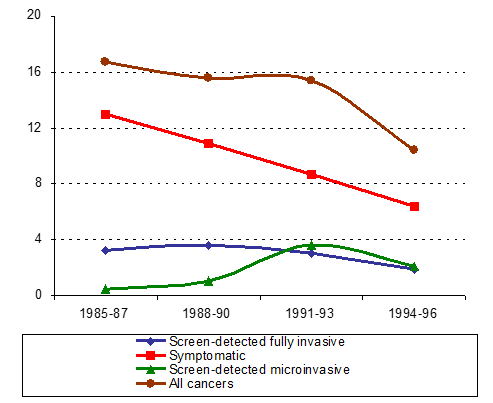This content is also available in:
Italiano
Português
Deutsch
Čeština
Română
Türkçe
Detection of occult invasive cancers in asymptomatic women may increase the incidence of cancer in early rounds organised screening.
An audit of 382 cancers from 1985 to 1996 in Southampton, during the introduction of organised screening in the background of opportunistic screening with poor quality control, showed a trend from symptomatic to screen-detected cancers with an increase in overall incidence during the prevalence round (Figure 6.7).
Screen-detected cancers are more likely to be diagnosed at stage I: Andrae et al. (2008) reported 91% of screen-detected cancers to be equally divided between stage IA and IB compared with 51% of symptomatic cancers (12% IA, 39% IB).
Screen-detected cancers
|

In summary, data from well-organised programmes reported more than 25 years ago as well as from those organised more recently demonstrate multiple factors to be considered when assessing the effectiveness or otherwise of cervical screening in terms of incidence and mortality.
Measurement of the effect of centrally organised screening depends on
|
Learning points from Chapter 6
|

